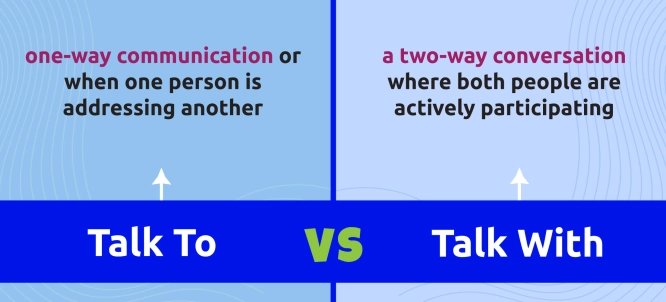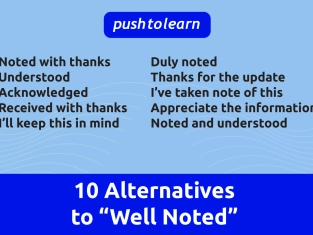by PushtoLearn
Talk To vs Talk With
Table of Contents
Talk To vs Talk With - Exercises and Quiz
This exercise focuses on the difference between Talk To vs Talk With.
What Do "Talk To" and "Talk With" Mean?
Talk To: This phrase usually implies that one person is speaking to another, often in a one-sided way. It suggests that one person is doing most of the talking while the other is mainly listening.
Example Sentence:
➡️ I need to talk to my boss about the project.
Talk With: This phrase suggests a more equal, two-way conversation where both people are actively participating. It implies a dialogue where both parties share their thoughts.
Example Sentence:
➡️ I had a great time talking with my friend about our weekend plans.

When to Use "Talk To"
One-Way Communication: Use "talk to" when one person is delivering information or when the conversation might be more one-sided. This is common when one person is giving instructions, making requests, or addressing a group.
Example Sentences:
➡️ The teacher talked to the students about their homework.
➡️ I need to talk to the doctor about my symptoms.
Authority or Formality: "Talk to" can also be used when there is a difference in authority, like when an employee talks to their boss.
When to Use "Talk With"
Two-Way Communication: Use "talk with" when the conversation is more balanced, with both people sharing ideas, asking questions, and listening to each other.
Example Sentences:
➡️ She enjoys talking with her colleagues during lunch breaks.
➡️ Let’s talk with the team about the new strategy.
Collaboration and Agreement: "Talk with" often suggests that both parties are working together to reach a common understanding or decision.
Common Errors
Students often use "talk to" and "talk with" interchangeably, which is usually fine since native speakers do this as well. However, being aware of the subtle difference can help you choose the best phrase for each situation.
⭐ Use "talk to" for: more one-sided conversations, giving instructions, or when speaking with someone of higher authority.
⭐ Use "talk with" for: more balanced, two-way conversations, discussions, or when collaborating with someone.
FAQ
Can I use "talk to" in a friendly conversation?
Yes, "talk to" can be used in casual or friendly settings, but it may imply that one person is leading the conversation more than the other.
Is "talk with" more polite than "talk to"?
"Talk with" can sound more collaborative and equal, which might come across as more polite in some contexts, but both are polite depending on how they’re used.
Do native speakers care about this difference?
Native speakers often use these phrases interchangeably without much thought, but the subtle difference can be important in formal writing or communication.
Which one should I use in a formal setting?
In a formal setting, "talk to" is often used for addressing a group or giving instructions, while "talk with" might be better for discussions or negotiations.
Can "talk to" ever mean a two-way conversation?
Yes, "talk to" can still involve a two-way conversation, especially in casual contexts. The distinction is more about the balance of communication rather than the act of conversing itself.

